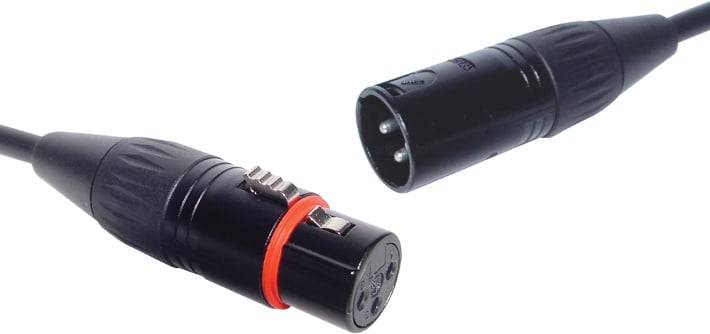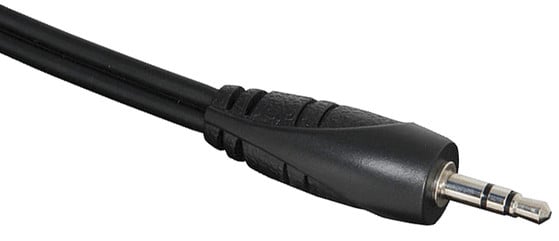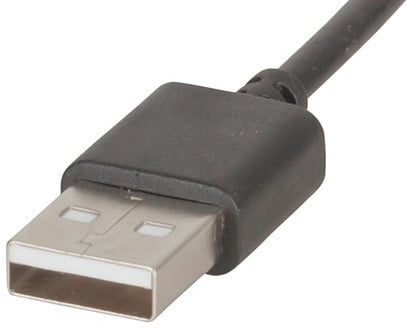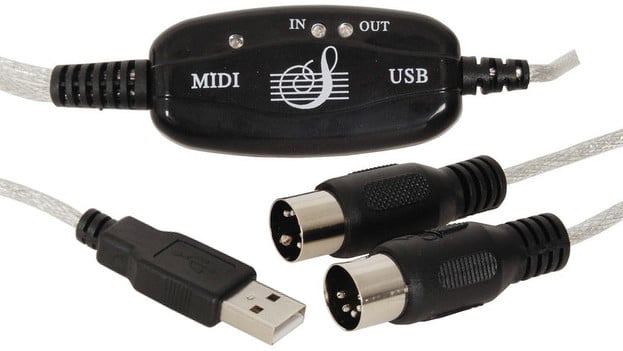How Audio Cables Make a Difference in Sound Quality
April 22, 2021

It’s easy to get tangled up when it comes to audio cables, and the sad truth is that we forget they exist once everything is all connected and working. But what makes this audio component worthy of attention?
The most frequently asked question is if audio cables make a difference. Do they really affect the sound quality? Let’s find out!
Audio Cables
Audio connectors might not be the most exciting part of a studio set up, but they matter. Recording a clean sound while getting a loud enough signal from microphones, guitars, synthesisers, and drum machines into your DAW (Digital Audio Workstation) have a lot to do with the audio cable types you use.
Let us take you through the audio cable types and components, and explain when cables affect your sound.
A Guide to Audio Cable Types
There are two common types of audio connectors: analogue and digital cables.
Analogue Cables
This type of audio cable works by transmitting information through continuous waveforms. Let’s say the information is a 100Hz sine wave. In cases like this, the voltage running through the analogue cable will conduct 100 positive-negative cycles per second.
Before we head straight to the cable types, let’s get to the basics of analogue cables. These are:
- Balanced. This cable is designed to cancel out noise, interferences and electrical hums, with the three wires: a ground wire, positive polarity (hot) wire, and negative polarity (cold) wire. The same signal runs through both the positive and negative polarity wires; the only difference is that the negative is inverted. This results in silence when the noise patterns of two wires are in opposite phase with one another.
- Unbalanced. Meanwhile, unbalanced cables contain two wires: ground wire and positive polarity (hot) wire. This cable also has a bigger chance of picking up noise, especially with cable lengths of over 20 feet. As the name suggests, they only produce an unbalanced signal.
How Do You Know Whether or Not Your Gear Is Balanced?
In order to achieve a balanced connection, all points in your cable circuit must be balanced. This includes the output on your gear, cables, and input (e.g. mixer or PA). If one of these is unbalanced, then it will make your connection unbalanced.
Now, how do you know if your gear is balanced? It’s balanced if:
- It has XLR (External Line Return) outputs or inputs. This type of connector is used for transmitting balanced line-level signals.
- It’s in the manual or written on it (e.g. microphones, mixers, or synths with XLR out).
It’s unbalanced if:
- The instrument you’re using is a guitar or bass
- It has 6.5mm (aka 6.35mm or ¼ inch) mono or stereo outputs
- It has RCA (Radio Corporation of America) inputs or outputs
Your gear is most likely unbalanced if it doesn’t say anything or if it has only 6.5mm (aka 6.35mm or ¼ inch) outputs. Make sure to check the manual if you’re unsure.
Why Do We Need to Know This?
When you understand the difference between balanced and unbalanced cables, you’ll know what is right for your recording needs. Wrong cables and noise interference no more!
According to LANDR, if you have balanced gear and a balanced mixer, they suggest using balanced cables to get a nice balanced connection. For unbalanced connections, keep your cable as short as possible—under 6 feet, about 1.8 metres—to prevent interference.
Analogue Cable Types

XLR Cables
This type of cable features three pins — positive, negative and ground — and a circular connector, delivering balanced microphone and line-level signals over long distances without noise interference.
XLR cables are suitable for both live sound applications and recording studio applications. What’s more, this cable allows mixing boards to deliver ‘phantom power,’ a power source, to microphones. Most other cables can’t do this.
Check out our range of XLR Cables here.

TS Cables (Eg. 6.5mm Mono, 3.5mm Mono)
Generally used for mono, unbalanced signals, this cable has two contact points separated by an insulator ring: tip (T) and sleeve (S), hence TS cable. The audio signal travels over the tip, while the ground uses the sleeve. This makes T the positive and S the ground.
TS cables are also called guitar cables as they’re mostly used to connect a guitar to an amplifier. Unbalanced TS cables should be used with unbalanced input and outputs, e.g. connecting a keyboard with unbalanced TS outputs to the unbalanced input on a DI box.

TRS Cables (Eg. 6.5mm Stereo, 3.5mm Stereo)
TRS cables have three contact points, or conductors, separated by insulator rings: tip (Tip), sleeve (S), and ring (R) conductor. This type of cable is used for mono, balanced signals and stereo signals.
Thanks to the two conductors, there’s twice as much signal. Plus, with the common-mode rejection, you can run longer cables without noise interference.
What’s the difference between TS and TRS cables? In general, TS cables have one signal conductor (positive) and ground, whereas TRS has two conductors (positive and negative) and ground. To tell the difference between these two cables, a TS plug will have a single black band, while a TRS Plug will have 2.
Check out our Audio Cables, including TS and TRS here.

RCA Cables
If you’re using a CD/DVD player or turntable, you’re likely to be familiar with the RCA cable. This type of cable has three colour-coded plugs that connect to three corresponding coloured jacks on the back of a TV, projector, or another output device.
RCA cables carry audio and video signals from the component device to the output device, i.e. television or speakers. In terms of the colours used, they vary on the uses of an output device, such as:
- Composite video. The colours used are red and white or black for right and left audio channels and yellow for composite video. Composite video is analogue, non-digital, and carries all the video data in one signal.
- Component cables. Considered the most sophisticated RCA cable and sometimes used on HD TVs. The colours are usually red, green, and blue and two audio lines coloured red and white or black.
What’s more, component RCA cable is capable of much higher resolution (480p, 579p, 720p, 1080p, or even higher) compared to composite cable.
Check out our RCA Cables here.
Digital Cable Types
MIDI Cables
MIDI (Musical Instrument Digital Interface) cables are used to sync and communicate between a variety of musical instruments and computers. This type of digital cable carries information like notation, pitch, velocity, vibrato, panning, and tempo. Check out our MIDI to USB Cable here.

USB Cables
Standing for Universal Serial Bus, USB is a plug and play interference that allows a computer to communicate with peripheral devices such as anything from a keyboard or mouse, external hard drives, audio interfaces, and more.
USB cables are generally thinner, lighter, and cheaper than parallel bus cables, making them ideal for consumer products.
The Difference Between Analogue and Digital Cable
In a nutshell, both cables transmit audio information. The only difference is that analogue cables transmit electrical audio signals, whereas digital cables work by transmitting information through a long string of 1’s and 0’s, also known as binary codes.
Audio Cable Components
Conductor
As the name suggests, a conductor conducts electricity to pass signal and power through the cable from the original source. If the conductor is too small or made of inferior conductive metals, the audio signal will encounter more resistance and the sound will change.
Conductive materials include:
- Silver. The most conductive metal, generating a brighter and more present sound.
- Copper. The second most conductive metal and most commonly used in cables. Copper produces a more balanced and warm sound.
- Gold. Often used as a coating on cable connector ends, and isn’t as conductive as silver or copper.
- Aluminium. Lacks the same clarity and brightness of sound due to much lower conductivity.
Shielding
According to Hosa, part of audio quality is in cancelling noise that the conductor picks up between sources. In the case of balanced cables, shielding is less important as they normally transmit line-level audio signals that aren’t required to be amplified.
For unbalanced cables, on the contrary, shielding is more important as they pick up unwanted noise in longer runs. The ground wire inside also acts as an antenna, making the cable more susceptible to interference.
The Bottom Line
Audio cables certainly can make a difference, but they don’t “improve” your sound. Their ultimate goal is to translate the sound from the source as transparently as possible, which makes them an important audio component and worthy of attention.
Looking for an audio cable for your input device or instrument? You can check out our great selection of audio and visual cables here.
© Wiltronics Research Pty Ltd 2021

Write a Comment
You must be logged in to post a comment.